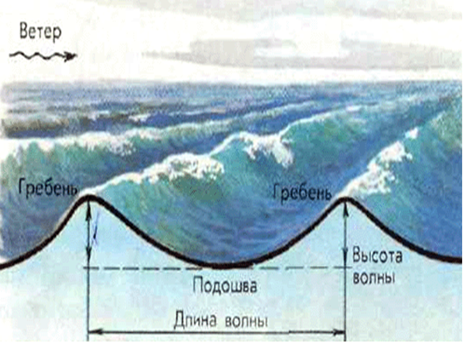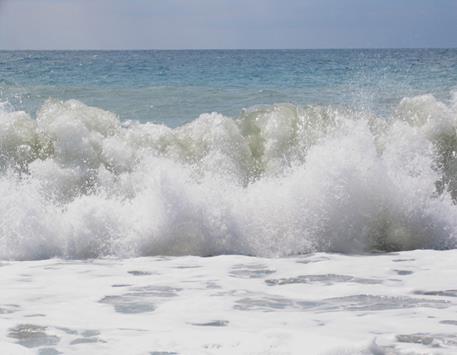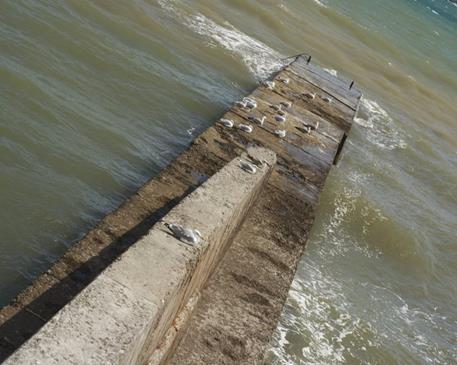With the help of this video tutorial, you can independently study the topic "Waves in the Ocean". You will learn how waves are formed in the ocean, what they are. What is the main reason for their occurrence? Why do some waves sometimes have white lambs? What are the largest waves in size? After listening to the teacher's lecture, you will receive answers to these and other interesting questions.
Theme: Hydrosphere
Lesson: Waves in the Ocean
The purpose of the lesson: to find out what waves are and what are the reasons for their occurrence.
The water in the ocean is in constant motion. The main reason for the movement of water in the oceans is wind.
A weak wind causes ripples on the water (see Fig. 1). Ripples - shallow waves on the surface of the reservoir.
Rice. 1. Ripples on the water ()
With strong winds, the waves become larger and stronger (see Fig. 2).

Rice. 2. Large waves ()

Rice. 3. Wave parts ()
When approaching a gentle bank, the lower part of the wave is braked against the ground, the upper part of the wave moves faster, as a result, the wave with splashes and foam breaks on the coast, this phenomenon is called surf(see Fig. 3, 4).

For protection against waves of berths, ports, piers, embankments, breakwaters (breakwaters) are constructed, which damp the energy of the waves (see Fig. 5).

Rice. 5. Breakwater
In addition to wind, the reasons for the formation of waves can be human activities, movements of the earth's crust, avalanches and landslides.
Tsunami - giant waves arising from the collision of lithospheric plates (earthquakes) or volcanic eruptions.
The prices have tremendous speed, height and strength. Approaching shallow water, the tsunami height increases to 30 meters! Tsunamis lead to destruction, loss of life, flooding.
High tide (low tide)- systematic fluctuations in sea level caused by the gravitational forces of the Moon and the Sun.
The moon and sun act like a magnet on water. The highest tides occur off the eastern shores of North America - the Bay of Fundy.
Homework
Clause 26.
1. What causes of the formation of waves do you know?
Bibliography
The main
1. An initial course in geography: Textbook. for 6 cl. general education. institutions / T.P. Gerasimova, N.P. Neklyukova. - 10th ed., Stereotype. - M .: Bustard, 2010 .-- 176 p.
2. Geography. 6th grade: atlas. - 3rd ed., Stereotype. - M .: Bustard; DIK, 2011 .-- 32 p.
3. Geography. 6th grade: atlas. - 4th ed., Stereotype. - M .: Bustard, DIK, 2013 .-- 32 p.
4. Geography. 6 cl .: cont. cards. - M .: DIK, Bustard, 2012 .-- 16 p.
Encyclopedias, dictionaries, reference books and statistical compilations
1. Geography. Modern Illustrated Encyclopedia / A.P. Gorkin. - M .: Rosmen-Press, 2006 .-- 624 p.
Literature for preparing for the State Examination and the Unified State Exam
1. Geography: Initial course: Tests. Textbook. manual for students of 6 cl. - M .: Humanit. ed. center VLADOS, 2011 .-- 144 p.
2. Tests. Geography. 6-10 grades: Study guide / A.A. Letyagin. - M .: OOO "Agency" KRPA "Olymp": "Astrel", "AST", 2001. - 284 p.
Materials on the Internet
1. Federal Institute for Pedagogical Measurements ().
2. Russian Geographical Society ().




